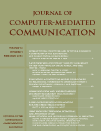
Journal of Computer-Mediated Communication
Scope & Guideline
Exploring the Digital Dialogue: Where Technology Meets Communication
Introduction
Aims and Scopes
- Digital Communication Dynamics:
The journal emphasizes the study of how communication practices evolve in digital environments, including social media, online forums, and collaborative platforms. - Socio-Technical Perspectives:
Research often employs socio-technical frameworks to analyze the complex interplay between technology and social behavior, highlighting how societal factors influence digital communication. - User Experience and Interaction:
A focus on user interactions with technology, including emotional responses, agency in human-AI interactions, and the implications of algorithmic personalization. - Cultural Contexts of Communication:
Exploring how cultural factors shape digital communication practices, particularly in diverse and marginalized communities. - Impact of Technology on Well-Being:
Investigating the effects of digital communication on psychological well-being, social capital, and community resilience, especially in the context of digital inequalities. - Gender and Identity in Digital Spaces:
The journal addresses issues of gender, identity, and representation in online environments, examining how these factors influence user experiences and interactions.
Trending and Emerging
- Algorithmic Impact on Social Connectivity:
Recent studies focus on how algorithmic personalization affects social connectedness, reflecting concerns about isolation in digital spaces. - AI and Human Interaction:
There is a growing interest in the dynamics between AI technologies and human users, particularly in understanding emotional responses and user agency. - Digital Disconnection and Well-Being:
Research on the motivations and consequences of digital disconnection is gaining traction, reflecting a societal shift towards mindfulness in technology use. - Gender and Digital Interaction:
Emerging studies are exploring the intersection of gender and digital communication, particularly how digital platforms affect gender expression and identity. - Socio-Technical Systems Analysis:
An increase in research utilizing socio-technical systems approaches to understand the complexities of remote communication and its implications for social dynamics. - Crisis Communication in Digital Spaces:
The journal is increasingly addressing issues of crisis communication, particularly how digital platforms play a role in information dissemination during social movements or emergencies.
Declining or Waning
- Traditional Media Comparisons:
Research comparing digital communication with traditional media forms has decreased, suggesting a shift towards more nuanced explorations of digital-specific phenomena. - Basic Technology Adoption Studies:
Studies focused solely on technology adoption without considering the socio-cultural implications or user experiences are becoming less common, as the field matures. - Static Communication Models:
There is a waning interest in static models of communication that do not account for the dynamic nature of digital interactions and the evolving landscape of technology. - Generalized User Demographics:
There is less emphasis on broad demographic analyses without contextual depth, as the journal increasingly prioritizes intersectional and nuanced understandings of user experiences. - Overly Simplistic Psychological Outcomes:
Research that merely correlates social media use with basic psychological outcomes is declining, giving way to more complex analyses that consider multiple variables and contexts.
Similar Journals
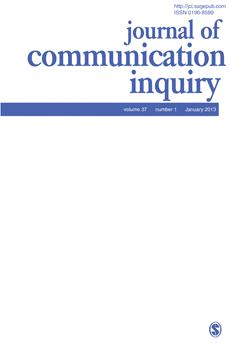
Journal of Communication Inquiry
Illuminating Contemporary Issues in Communication and the ArtsJournal of Communication Inquiry, published by SAGE PUBLICATIONS INC, is a premier interdisciplinary journal that serves as a vital platform for scholars and practitioners in the fields of communication, cultural studies, and the arts and humanities. With a rich history dating back to its inception in 1974, the journal has consistently upheld rigorous academic standards, reflected in its impressive rankings within the Q1 and Q2 quartiles across various disciplines according to the latest metrics. The journal's comprehensive scope encompasses theoretical and empirical research, catering to a diverse readership who are keen to explore contemporary communication issues and cultural dynamics. While the impact factor is not explicitly stated, the journal's Scopus ranks position it favorably within its categories, with notable percentiles that highlight its influence in the academic community. As an essential resource for researchers, professionals, and students alike, the Journal of Communication Inquiry invites contributions that advance the discourse surrounding communication practices and cultural phenomena, contributing to the ongoing dialogue in these evolving fields.

Netnomics
Charting New Territories in NetnomicsNetnomics, published by SPRINGER, is a pivotal academic journal focusing on the intersection of economics, computer networks, and information systems. With its ISSN 1385-9587 and E-ISSN 1573-7071, this journal strives to address current trends and research challenges in the digital economy, effectively capturing the dynamics of online markets and digital goods. Although open access options are not available, Netnomics maintains an impressive standing, ranking in the Q3 category for its fields in Computer Networks and Communications, Economics and Econometrics, and Information Systems. Despite its discontinuation of coverage in Scopus from 2005 through 2021, the journal continues to contribute valuable insights, making it a relevant source for researchers, professionals, and students eager to explore the evolving landscape of economic interactions in a digitalized world. With a focus on empirical research and theoretical analysis, Netnomics provides a platform for advancing knowledge at the confluence of technology and economic theory, critical for professionals navigating the complexities of today's economy.
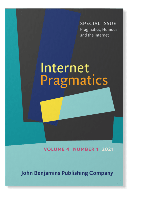
Internet Pragmatics
Exploring the Intersection of Language and TechnologyInternet Pragmatics, published by John Benjamins Publishing Company, stands as an essential journal within the fields of Computer Networks and Communications and Linguistics and Language. With an ISSN of 2542-3851 and an E-ISSN of 2542-386X, it has been dedicated to exploring the nuanced interactions and societal implications enabled by the internet since its inception in 2019. The journal has quickly gained a strong academic reputation, achieving a Q3 ranking in its Computer Networks and Communications category and a prestigious Q1 ranking in Linguistics and Language for 2023, showcasing its vital contribution to interdisciplinary discourse. Researchers and professionals alike can benefit from its robust collection of articles that delve into the intersection of technology and communication, making it a pivotal resource for those keen on understanding the evolving landscape of digital interaction. Although currently available through traditional access options, the journal endeavors to broaden access, ensuring that valuable insights in this rapidly advancing field reach a wider audience.
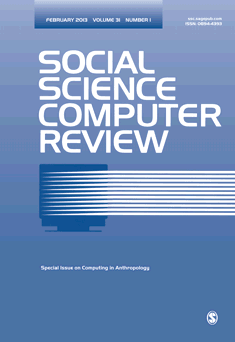
SOCIAL SCIENCE COMPUTER REVIEW
Navigating the digital landscape of social science inquiry.SOCIAL SCIENCE COMPUTER REVIEW, published by SAGE Publications Inc, is a premier peer-reviewed journal that has been contributing to the intersection of technology and social science since its inception in 1983. With an impressive H-index and categorized in Q1 across multiple disciplines including Computer Science Applications, Law, Library and Information Sciences, and Social Sciences (miscellaneous), this journal stands out as a critical resource for researchers, professionals, and students seeking to explore the implications of computational methods in societal contexts. The journal is widely recognized for its rigorous scholarship, evidenced by its high Scopus ranks in various categories, notably ranking #17 in Social Sciences - Law (98th percentile) and #9 in General Social Sciences (96th percentile), making it an essential publication for those looking to stay at the forefront of social science research. Though it does not provide open access, the journal's commitment to disseminating cutting-edge research ensures its vital role in advancing knowledge and fostering interdisciplinary collaboration. For those engaged in studying and applying computational techniques within the social sciences, SOCIAL SCIENCE COMPUTER REVIEW is a valuable and indispensable source.
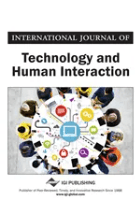
International Journal of Technology and Human Interaction
Transforming Perspectives on Technology's Role in Daily LifeInternational Journal of Technology and Human Interaction, published by IGI Global, serves as a critical platform for the exploration of the intersection between technology and human behavior, offering an interdisciplinary lens on topics within the realms of Human-Computer Interaction and Information Systems. With an ISSN of 1548-3908 and an E-ISSN of 1548-3916, this journal has been contributing to scholarly discourse since its inception in 2005, with ongoing publication until 2024. Hosting a diverse range of research articles, case studies, and reviews, the journal aims to advance the understanding of how technology influences human experience and interaction patterns in various contexts. Although currently positioned in the Q4 quartile of both Human-Computer Interaction and Information Systems categories, the journal fosters knowledge that aspires to redefine scope and standards within the field. Its commitment to quality research is reflected in its Scopus rankings, showcasing its relevance despite its emerging status in academia. Targeting researchers, professionals, and students alike, the International Journal of Technology and Human Interaction invites contributions that address the pressing challenges and innovations at the nexus of technology and human interaction.
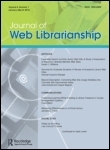
Journal of Web Librarianship
Exploring Innovative Practices in Web LibrarianshipWelcome to the Journal of Web Librarianship, an esteemed publication dedicated to the evolving landscape of library science and information technology. Published by Routledge Journals, Taylor & Francis Ltd, this journal serves as a vital platform for researchers and professionals to share innovative practices, methodologies, and research findings in the fields of Library and Information Sciences and Computer Science Applications. With an impressive impact factor reflected in its 2023 rankings—Q1 in Library and Information Sciences and Q2 in Computer Science Applications—the journal is well-positioned to influence the discourse and development within these disciplines. Since its inception in 2007, the Journal of Web Librarianship has continually contributed to the academic dialogue, ensuring a comprehensive understanding of the critical role that web technologies play in library services. Though it is not an open-access journal, it remains an invaluable resource for those dedicated to advancing the practice and theory of web librarianship. Join us in exploring the intersections of information and technology as we work towards a more informed society.
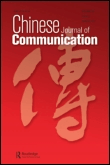
Chinese Journal of Communication
Exploring the Nexus of Communication and Culture in ChinaThe Chinese Journal of Communication, published by Routledge Journals, Taylor & Francis Ltd, has established itself as a pivotal platform for scholarly discourse in the field of communication, particularly within the context of Chinese media and its global interactions. With a notable Q1 ranking in the 2023 Communication category and a commendable Scopus ranking of #77 out of 511 journals, it represents a significant contributor to the advancement of communication studies. The journal's focus extends from theoretical frameworks to empirical research, fostering a comprehensive understanding of the evolving communication landscape. Available in both print (ISSN: 1754-4750) and digital formats (E-ISSN: 1754-4769), the journal does not operate on an Open Access basis, yet it remains a highly sought-after resource for researchers, professionals, and students aiming to explore communication phenomena from a Chinese perspective. Given its publication history converging from 2010 to 2024, it serves as a valuable reference point for ongoing academic investigations and is instrumental in shaping future research directions in this dynamic field.
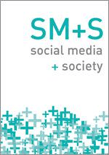
Social Media + Society
Unpacking the Influence of Social Media on Our LivesSocial Media + Society is a premier, open access journal published by SAGE Publications Ltd, dedicated to the interdisciplinary exploration of social media's impact on society. Since its inception in 2015, this journal has rapidly established itself as a leading platform for scholarly discourse, evidenced by its impressive Q1 rankings across multiple categories, including Communication, Computer Science Applications, and Cultural Studies, as of 2023. With a Scopus ranking placing it in the top percentiles of its field, Social Media + Society provides profound insights into the evolving dynamics of social media technologies, their applications, and societal repercussions. The journal aims to foster a critical dialogue among researchers, professionals, and students, ensuring accessibility through its open access model, which allows readers to engage with cutting-edge research without barriers. Published in the United Kingdom, it serves as a vital resource for anyone interested in understanding the complex intersections of digital communication, culture, and technology.

Information Communication & Society
Cultivating Scholarly Conversations on Information and CommunicationInformation Communication & Society, published by Routledge Journals, Taylor & Francis Ltd, is a premier journal in the fields of communication and library and information sciences, boasting an impressive impact factor and consistently high rankings in Scopus, including Rank #18/511 in Communication and Rank #14/280 in Library and Information Sciences for 2023. With its focus on the dynamic interplay between information technology and society, the journal serves as a vital platform for researchers, professionals, and students, facilitating the discussion of contemporary issues that shape digital environments. Since its inception in 2001 and converging from 2005 to 2024, the journal has maintained a rigorous peer-review process to ensure that it publishes high-quality research that contributes to ongoing debates and developments in the digital age. Although it does not offer open access, the journal's esteemed reputation and Q1 categorization underscore its impact within the academic community, making it an essential resource for anyone interested in the evolution of communication in the modern world.

Online Journal of Communication and Media Technologies
Exploring the Convergence of Media, Technology, and CommunicationThe Online Journal of Communication and Media Technologies, published by Bastas Publications DOO in Cyprus, stands as a crucial platform for scholars and practitioners in the rapidly evolving fields of communication, media, and technology. With an ISSN of 1986-3497, this journal addresses a diverse range of topics at the intersection of these disciplines, making significant contributions to both theoretical frameworks and practical applications. As a recognized entity in the academic community, it boasts impressive rankings in Scopus, such as Q2 in Communication and Q2 in Media Technology, illustrating its impact and relevance. Researchers will appreciate its open access model, which facilitates knowledge dissemination and engagement among audiences. By fostering a collaborative environment for innovative ideas and research findings, the journal not only advances academic inquiry but also supports the professional development of its readership in navigating the complexities of modern media landscapes. Aiming to bridge the gap between theory and practice, the Online Journal of Communication and Media Technologies is an essential resource for those who wish to stay at the forefront of communication and media research from 2019 through 2024.